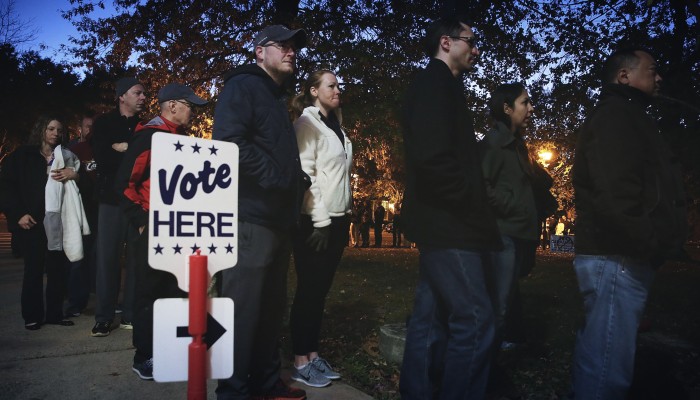How to Fight Voter Suppression Nationwide
Congress has the chance to restore crucial voting rights protections before the 2020 election.

This was originally published by the Guardian.
On Friday the House of Representatives showed the country that it will not tolerate racial discrimination at the polls. It passed the Voting Rights Advancement Act, a bill that would restore the 1965 Voting Rights Act to its full strength. Our country needs that reform and others to make the 2020 election free and fair for all.
Since its founding, America has moved slowly towards granting suffrage to more and more Americans, bringing more people into the electoral process. The Voting Rights Act of 1965 has been instrumental to that progress. But in 2013 the Supreme Court dramatically weakened that law.
In Shelby County v. Holder, the court disabled the act’s provision that required states and localities with histories of racial discrimination in voting to “pre-clear” new voting regulations.
The pre-clearance system had allowed federal authorities to vet proposed voting rules for racial discrimination before they could cause injury. From 1965 right up until the Shelby decision, this safeguard blocked many restrictions that would have made it more difficult for Black and brown people to participate and vote.
Starting around 2010, states across the country had already introduced legislation that would put unnecessary barriers in front of the ballot box, particularly for voters of color. Some states with early voting reduced the number of days of advance access to the polls. Others required forms of identification to vote that lawmakers knew many Americans did not have. States like Tennessee also burdened community groups that help register voters with unnecessary regulations and restrictions.
This only got worse after Shelby, when several of the states once held in check by pre-clearance immediately enacted restrictions on voting that would have been, or had been, blocked by the federal government.
Now, with a weakened Voting Rights Act, lawyers have had to combat voter suppression using time-consuming and expensive methods, and many voters have had to vote under the problematic law because elections happen faster than court resolutions.
Next year, Americans will choose their president, a person whose nominations to the Supreme Court will have an impact on voting rights and other important matters nationwide. Voters will also elect 11 governors, 7 states’ secretaries of state, and other officials who set and implement policies that impact our everyday life, including state voting rules. With looming uncertainty, we do not want to go into 2020 without all the available protections against voter suppression in place.
Congress has the first responsibility: pass a restored Voting Rights Act, now with the Senate. But that is not enough. Our legislators should also provide adequate funding to states and localities to administer their elections.
And others need to join the effort to protect the vote. Governors and secretaries of state need to make sure that the technology Americans use to vote is secure, and that Americans have fair polling place resources — voting locations, machines and poll workers when they vote. Voters need to get themselves and their family, friends, and neighbors registered; check to ensure their registration status stays active; and make sure that everyone (including themselves) can get to the polls and vote.
Elections are when we all get to have our say about the direction the country is going in. Today might be our first step in ensuring they remain democratic.



